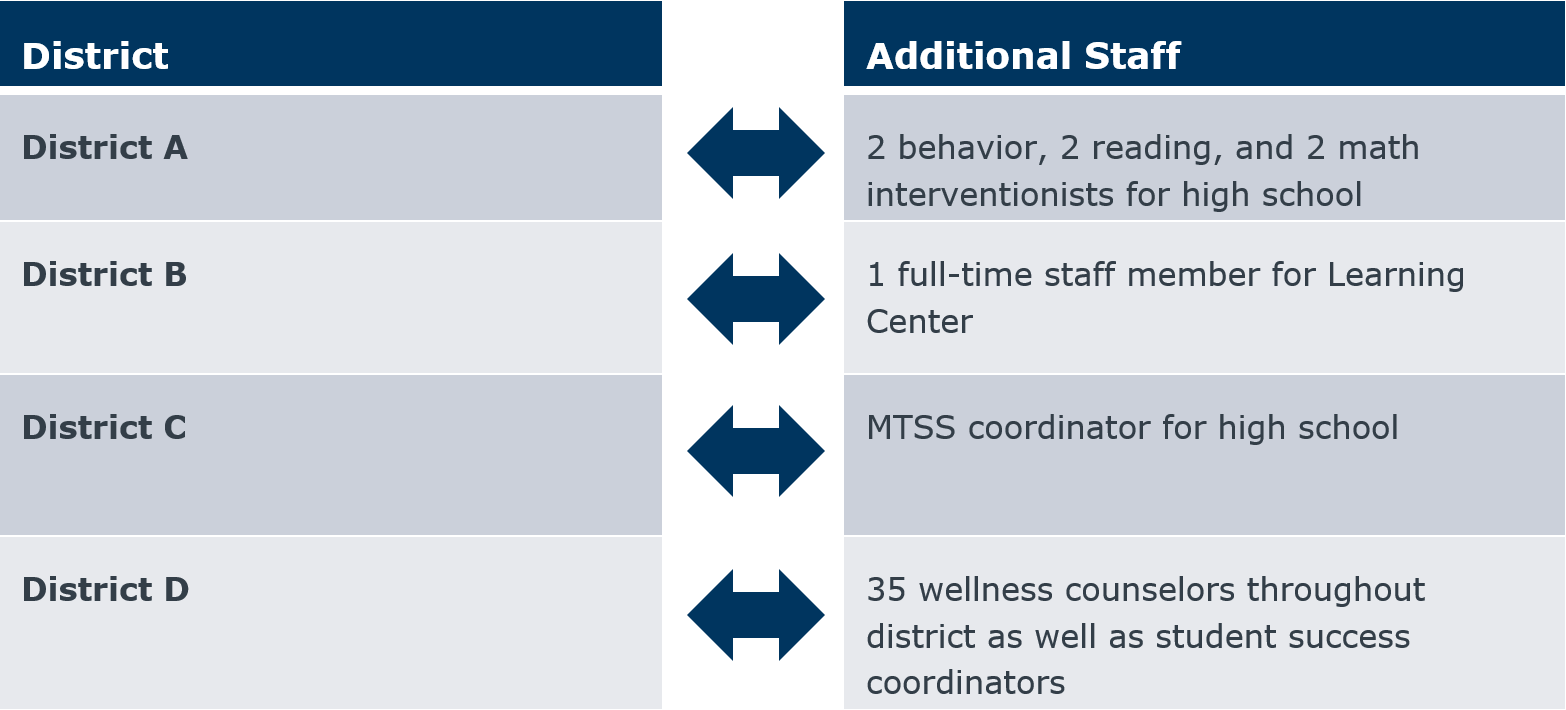Approaches to Tier II Support in High Schools
Though effective interventions and student supports in a Multi-Tiered System of Supports (MTSS) framework has proved highly effective in elementary schools, many districts find it more challenging to meet the academic and behavioral needs of students at the high school level. This research brief analyzes strategies used by four districts to provide Tier II support to high school students.
First, this brief overviews unique implementation challenges for MTSS in high schools and examines academic and behavioral support services profiled districts apply in their schools. Then, the report explores logistics for these interventions including staffing needs, professional development, and scheduling considerations. Download the full report or read the key takeaways below.
A good, powerful adult relationship can really help kids on a lot of different fronts.
Administrator, District D
Consider a flexible approach when defining Tier II interventions
All profiled districts report challenges with the MTSS model at a high school level due to scheduling complexities, the imperative to get students to graduation, and the need to address their academic skill gaps. At District C, a district that uses a more structured intervention framework, administrators still allow teachers to implement evidence-based interventions of their choosing.
Though the MTSS model traditionally treats each tier as a distinct grouping of students, the high school environment requires an open-minded approach and potentially broadening the guidelines of each tier to most effectively provide support to as many students as possible. Profiled districts seek inventive ways to work with the barriers in place to reach their students and meet both their academic and behavioral needs.
Target specific skill deficits and use small groups to accurately supplement student need
Profiled districts report a strong focus on skill remediation despite variation in subject matter at the high school level. Universal screeners and other assessments, used to classify students in need of support, gather data on particular skills students have not mastered at target performance levels.
Small group instruction also provides an opportunity for teachers and interventionists to work closely with groupings of students and target specific skills. District A interventionists use small groups in reading and math supplementary courses. Similarly, District B’s Learning Center instructor seeks opportunities to group students together to work on assignments targeting the same skills.
1:1 relationships with trusted adults help bolster student engagement
At all profiled districts, strong relationships with staff play an integral role in the support infrastructure. More specifically, 1:1 interactions between students and adults allow students to have their needs validated and feel they have an educator genuinely invested in their success.
District B operates Liberty Partnerships, a mentorship program that pairs at-risk students with community mentors who guide and encourage students. At District A, designated behavior interventionists meet with students 1:1 to discuss any challenges that may be leading to disruptive behavior. District D’s student success coordinators often meet individually with students to provide encouragement and motivation.
Consider hiring additional staff to support MTSS-related efforts
All profiled districts employ additional staff to expand their capacity for implementation of academic and behavioral supports. While hiring additional staff can prove costly, it ensures teachers may focus on instruction and students are adequately and holistically supported to participate actively in learning.

District A employs behavior, reading and math interventionists. District D has a student success coordinator. Similarly, District C staffs MTSS coordinators at each school. District B assigns a full-time staff member to its Learning Center all day. Finally, at District D, teachers receive an additional stipend for participating in mentorship programs that require additional time before and after school.
This resource requires EAB partnership access to view.
Access the research report
Learn how you can get access to this resource as well as hands-on support from our experts through District Leadership Forum.
Learn More